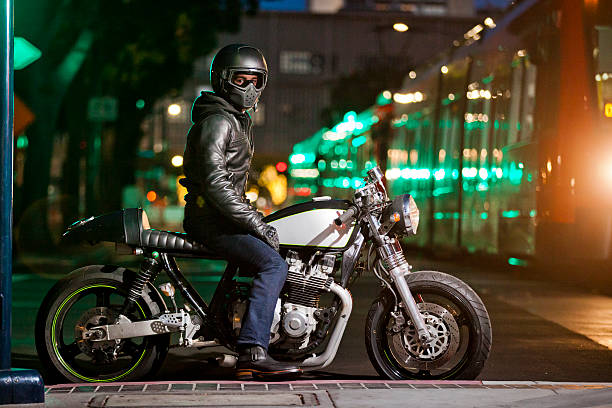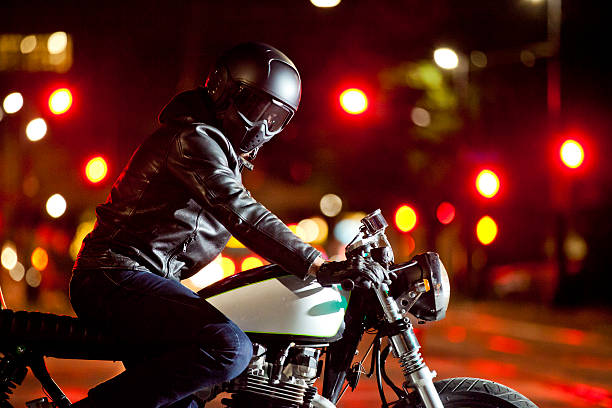Leather Motorcycle Jackets Vs. Vests: Pros and Cons
Bikers worldwide use leather motorcycle jackets and vests for flair and safety. Both clothing define a rider’s style and protect them from the elements and mishaps. Jackets and vests are chosen for their practicality, comfort, and safety, not just their style. This article discusses the pros and cons of each to assist riders choose based on their needs.

Biker culture reveres leather motorcycle jackets for their durability and style. Leather jackets offer full coverage, which is its main benefit. In a fall or slide, leather’s innate abrasion resistance is vital. This material reduces arm, torso, and back skin damage. Many jackets’ elbows, shoulders, and backs have padded armor inserts. This armor protects against serious injuries by absorbing impact.
Other benefits of leather coats include weather versatility. Leather is an excellent windbreaker for cycling in cooler regions. A leather jacket can be worn in winter and pleasant weather with replaceable thermal liners. Many modern leather coats are waterproof, but rain gear may be more effective.
But leather jackets can be heavy. Perforated leather can feel oppressive and dehydrating in hot weather. Leather needs frequent upkeep to stay supple and avoid cracking. Regular cleaning and conditioning may be too much for some riders.
Riders who want comfort and leather’s rough appearance prefer leather vests. Despite not protecting the arms, vests protect the torso’s essential organs. Vests provide improved ventilation and less restriction during hot weather rides, making them more pleasant. They offer more mobility, which can help when riding.
Vests are more compact than jackets, making them better for extended rides when fatigue sets in. Garments with plenty of pockets are convenient for riders carrying phones, wallets, and keys.
Vests provide less protection than jackets. They expose accident-prone arms and shoulders. This renders vests unsuitable for high-speed or long-distance highway travel; accidents are more likely. Vests need insulation, making them suitable for cold weather if layered, reducing their comfort.
Riders frequently decide between a leather jacket and a vest. Long-distance touring bikers may prefer jackets for their weatherproofing and versatility, while urban cyclists or short-trippers may prefer a vest for comfort in warmer weather.
Consider the style and personal expression these outfits give. Leather jackets have a traditional biker appearance that has been popular for decades. They can represent a biker’s identity and group culture. Vests, while popular, usually appeal to a segment of bikers who favor minimalism and convenience over complete protection.
Leather jackets and vests need frequent maintenance to look good and last. Without conditioners and waterproofing, leather can dry out and split. Leather needs this upkeep to stay protected and attractive.
Safety, weather adaptability, maintenance, and personal style should determine whether to choose a leather motorcycle jacket or a vest. Riders must weigh the pros and cons of each to choose their priorities. Biker gear can be customized to suit their riding lifestyle and situations, whether they prefer a jacket for protection and versatility or a vest for comfort. Leather clothing is crucial to motorcycle safety and enjoyment, and this meticulous selection provides a safe and comfortable ride.

Choosing Leather Motorcycle Jackets or Vests for Different Climates
Motorcycle riding exposes one to nature, making riding apparel vital, especially leather motorcycle jackets and vests. Beyond its visual appeal, both alternatives provide differing levels of protection, comfort, and usability in different weather conditions. This extensive exploration helps riders make these choices and prepares them for all weather.
Motorcycle leather jackets are known for their toughness and weatherproofing. A thick hide gives a high-quality leather motorcycle jacket outstanding abrasion resistance, a first line of defense in a fall. Leather jackets are essential for cold weather due to their wind resistance. Most leather jackets have insulating padding that can be altered or removed to suit temperature changes, extending their season range.
A jacket’s cold protection is its most significant benefit over a vest. The dense substance and snug fit of leather trap heat make it excellent for cold-weather riding. Leather jackets protect the upper torso and arms from biting cold winds that can penetrate lighter materials, so many winter motorcyclists choose them.
Going from chilly to warm can make leather coats less appealing. Leather’s wind-blocking and heat-trapping characteristics can overinsulate and reduce breathability as temperatures rise. This can cause pain, perspiration, and dehydration during extended rides. Riders may prefer lighter or ventilated leather jackets with perforations for hot weather.
In contrast, leather vests are worn for comfort and style in hot weather. Vests without sleeves allow improved airflow, keeping riders cool while providing some protection. Vests protect the core, where most essential organs are, but leave the arms exposed, which might be a good trade-off in hot weather when a full jacket is too warm.
Vests do more than keep you cool. Many have many pockets, making them fashionable and functional. They make carrying wallets, keys, and phones straightforward on short journeys or city rides, where high-speed accidents are less frequent and full gear may be complex.
Choosing a vest for hot weather riding sounds simple, but it exposes the arms and shoulders to scrapes or more severe damage in an accident. Vests are less suitable for high-speed or dangerous conditions than jackets. In warmer climates, riders who value safety over comfort may prefer specially constructed jackets with better ventilation.
Transitional weather, like early spring or late autumn, complicates the choice. Temperature fluctuations can mislead even the most seasoned riders during these periods. In these situations, layering is crucial. For flexibility, a vest can be worn over a long-sleeved shirt or under a lightweight jacket. Vests can be worn as the day warms up and cools down, making them adaptable.

Rain is another vital factor when purchasing a leather jacket or vest. Leather is water-resistant but not waterproof. Wet leather is hefty and takes a long time to dry. Wet leather loses its protective characteristics without adequate care and becomes stiff and crackable. Waterproofing treatments and sprays can improve a leather garment’s water resistance, but severe and frequent rain requires specialist rain gear to preserve its condition and efficacy.
Maintenance affects jacket and vest selection. Both need frequent maintenance to stay protective and attractive. Leather needs frequent cleaning and conditioning to avoid drying and cracking. Leather can endure decades if properly kept, but neglect can cause degeneration, compromising its appearance and rider protection.
The choice between a leather motorcycle jacket and a vest depends on the weather, protection needed, and ride requirements. Jackets with breathability and detachable liners provide better security and are adaptable to varied temperatures. While less protective, vests offer more comfort in hot weather and layering possibilities for different climates. Both designs are maintenance-intensive yet long-term investments in rider comfort and safety. Leather clothing is crucial to motorcycle safety and enjoyment, and this meticulous selection provides a safe and comfortable ride.





Leave a Reply